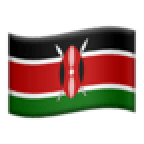The African Union (AU) has launched a bold initiative to reshape the world’s perception of Africa, beginning with the map.
In a move that challenges centuries of distorted geography, the AU is backing the "Correct The Map" campaign, advocating for the global adoption of the Equal Earth projection.
This modern map design aims to replace the centuries-old Mercator projection, which has long misrepresented Africa's true size and geopolitical significance.
Africa covers 30.37 million square kilometres, large enough to fit the United States, China, India, and most of Europe combined.
)
Equal Earth Projection Map showing the correct size of Africa
A Map That Shrinks Africa
Developed in 1569 by Flemish cartographer Gerardus Mercator, the Mercator projection was originally designed for maritime navigation.
However, its cylindrical design distorts landmasses, particularly near the equator. As a result, Africa appears significantly smaller than it is, about 14 times smaller than it should be.
Meanwhile, regions like Greenland and parts of Europe appear disproportionately large.
This distortion has perpetuated misconceptions about Africa's size and importance, influencing global perceptions and policies.
"It might seem to be just a map, but in reality, it is not," said Selma Malika Haddadi, Deputy Chairperson of the AU Commission.
She argued that the current design has long fostered the false impression that Africa is 'marginal,' despite being the world's second-largest continent by area, with over a billion people.
)
Mercator projection map that shows Africa as a smaller continent
READ ALSO: International celebrities who hold African citizenship
The Equal Earth Alternative
The Equal Earth projection, introduced in 2018 by a team of cartographers, offers a more accurate representation of landmasses.
Unlike the Mercator projection, it minimises distortion, providing a more realistic view of the continents' relative sizes.
The AU, along with advocacy groups like Africa No Filter and Speak Up Africa, is urging educational institutions, governments, and international organisations to adopt this projection.
Moky Makura, Executive Director of Africa No Filter, emphasised the significance of this change:"The current size of the map of Africa is wrong. It's the world's longest misinformation campaign, and it just simply has to stop."
Reclaiming Africa’s Global Position
This campaign aligns with the AU's broader objectives, particularly its Agenda 2063, which aims to accelerate the political and socio-economic integration of the continent.
By challenging outdated representations, the AU seeks to reclaim Africa's rightful place on the global stage, countering lingering colonial narratives and fostering a sense of pride and unity among Africans.
The AU's endorsement of the "Correct The Map" campaign also reflects a growing movement among other regions.
The Caribbean Community (CARICOM) has similarly supported the Equal Earth projection, viewing it as a rejection of the Mercator map's "ideology of power and dominance."
)
AU Commission Deputy Chairperson Selma Malika Haddadi
READ ALSO: 6 African countries with the strongest currencies in 2025
Implications for Education and Policy
The adoption of the Equal Earth projection has significant implications for education and policy. In classrooms across Africa, students will receive a more accurate understanding of their continent's size and global position.
This shift could influence everything from geography curricula to international trade policies, as a more accurate map fosters a better understanding of Africa's role in global affairs.
Fara Ndiaye, co-founder of Speak Up Africa, highlighted the campaign's educational impact.
"We're actively working on promoting a curriculum where the Equal Earth projection will be the main standard across all (African) classrooms," she said.
)
Fara Ndiaye, co-founder of Speak Up Africa
A Global Call for Change
The AU's call for a new map is not just about cartography; it's about reshaping perceptions and asserting Africa's place in the world.
By challenging the dominance of the Mercator projection, the AU is advocating for a more equitable representation of all continents.
This initiative invites global institutions, including the United Nations and the World Bank, to reconsider their mapping standards and adopt projections that reflect the true sizes of all continents.
As the "Correct The Map" campaign gains momentum, it serves as a reminder that even the most enduring symbols, like the world map, can be reimagined to reflect a more just and accurate view of our world.


)
)
)
)
)